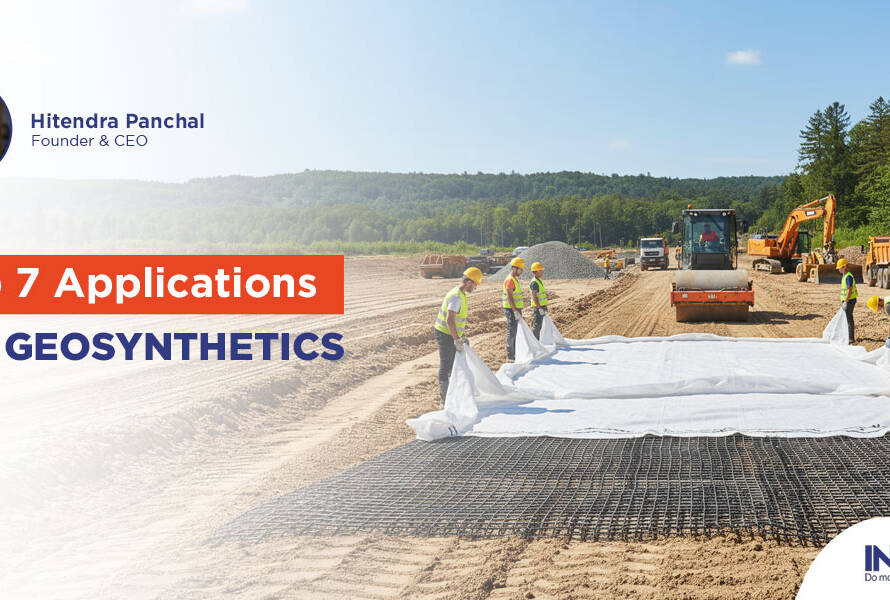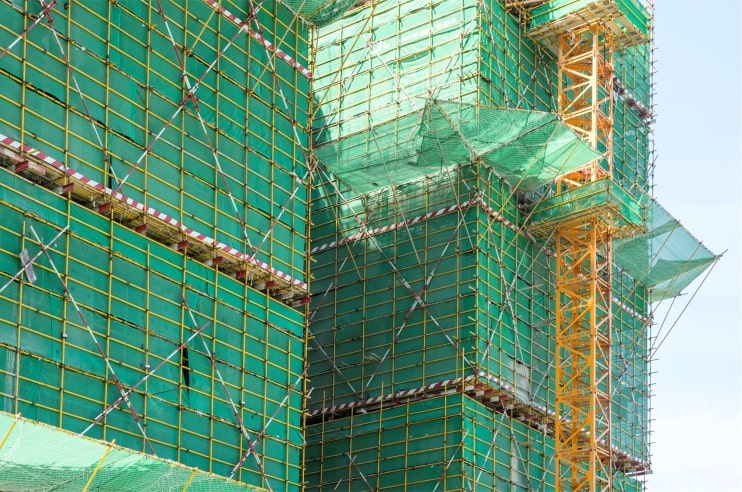|
Getting your Trinity Audio player ready...
|
The transportation network is the backbone of any thriving economy. Roads, in particular, bear the brunt of connecting people, places, and resources. However, building and maintaining robust roads in diverse terrains and weather conditions often poses significant challenges. Fortunately, the field of civil engineering has witnessed a revolutionary development in recent years called geosynthetic materials.

Unveiling the Power of Geosynthetics
Table of Contents
Geosynthetics are a broad category of synthetic materials like fabrics, grids, and membranes used in various civil engineering applications. These versatile materials boast remarkable properties like high tensile strength, permeability, chemical resistance, and UV stability. They function as superheroes under the surface of the road, offering a plethora of benefits:
The benefits of using geosynthetics in road construction are undeniable:

Enhanced Drainage Performance: Geosynthetics lead to stronger, more stable roads with improved drainage and reduced erosion. This translates to longer lifespans, lower maintenance costs, and safer driving conditions.

Cost-effectiveness: Compared to traditional methods like thicker pavements or extensive drainage systems, geosynthetics offer a cost-effective solution for improving road performance.

Faster and Easy to Install: The ease and speed of the installation of geosynthetics facilitate faster construction times, minimising traffic disruptions

High Chemical Resistance: Geosynthetics can reduce the need for natural resources like gravel and crushed stone, thus promoting environmental sustainability. Additionally, their use can minimise carbon emissions associated with heavy machinery, used during construction.
Applications in Road Construction
The applications of geosynthetics in road construction are numerous and transformative. Here are some key examples:
- Roads and Highways: Geonets and geocells are used to reinforce weak subgrades, improving their load-bearing capacity and reducing settlement. This leads to a more stable foundation for the road pavement.
- Landfill: Geotextiles separate the base course from the subgrade, preventing the mixing of materials and enhancing drainage. This results in a stronger, more durable base layer.
- Asphalt Overlays: Geogrids embedded within asphalt overlays prevent reflective cracking, extending the pavement’s lifespan and reducing maintenance costs.
- Drainage Systems: Geonets and geocomposites create efficient drainage channels alongside and beneath the road, channelling water away from the pavement and preventing waterlogging.
- Coastal Areas: Geosynthetic materials like salt barriers prevent soil erosion and landslides, especially around waterways and coastal areas.
Installation and Maintenance
Proper installation and maintenance are crucial for maximising the benefits of geosynthetics. Skilled professionals trained in geosynthetic installation techniques are required to ensure proper deployment and functionality. Regular inspections and maintenance are also essential to identify and address any potential damage or deterioration.
Challenges and Limitations
While geosynthetics offer numerous advantages, it is important to acknowledge their limitations. Their long-term performance depends on factors like material quality, proper installation, and maintenance. Careful consideration of these factors is crucial when making informed decisions about geosynthetic use.
Paving the Road to the Future
The future of geosynthetics in road construction is bright. Ongoing research and development are continually refining existing materials and introducing innovations. Self-healing geomembranes, and sensor-embedded geosynthetics are just a few examples of exciting advancements on the horizon. These advancements promise even greater sustainability, improved performance, and real-time monitoring capabilities for future roads.
Geosynthetic materials represent a paradigm shift in road construction, offering a blend of durability, efficiency, and sustainability. As we continue to explore, the role of geosynthetics is set to expand. This will pave the way for a future where infrastructure is not only built to last but also to conserve. Embrace the journey with us, as we explore the depths of revolutionising the use of geosynthetics in road construction.

About Author
Indonet Group is a leading manufacturer and supplier of extruded plastic netting and geosynthetic solutions. With a strong commitment to quality and sustainability, Indonet serves industries ranging from agriculture to infrastructure, offering innovative and durable products. Backed by advanced technology and a customer-centric approach, Indonet Group continues to be a trusted name in the field, delivering excellence across global markets.
Follow the Expert


